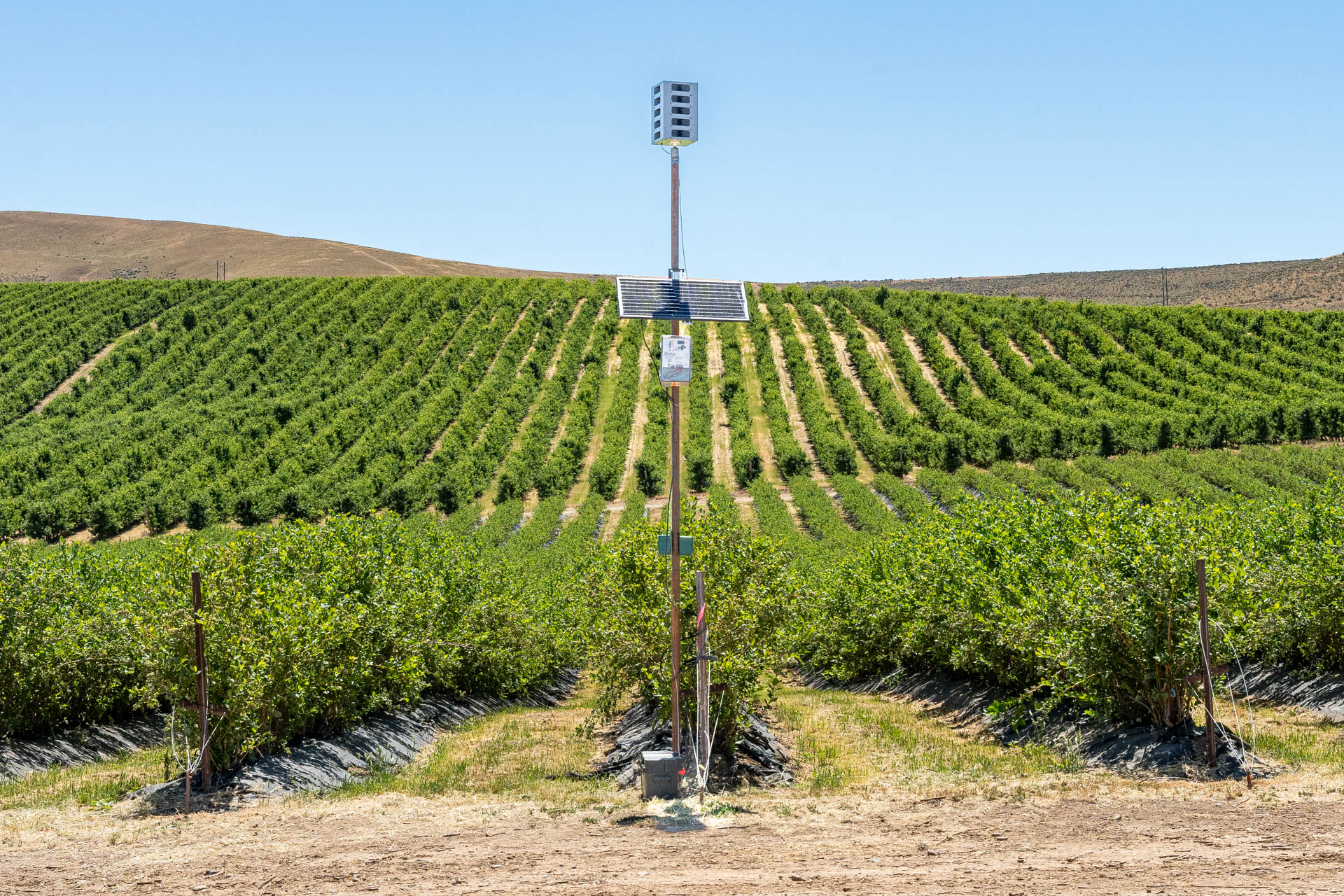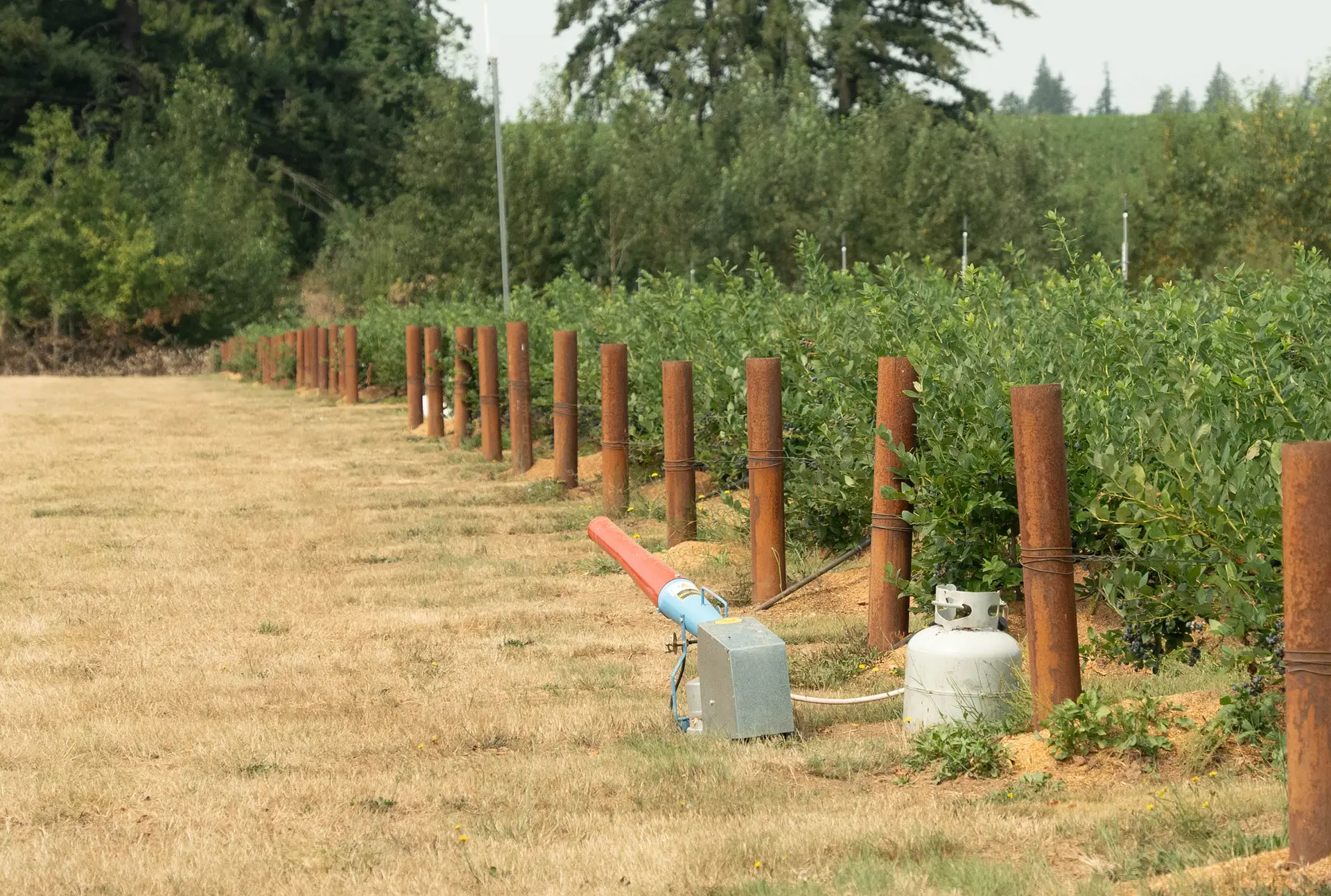Birds can significantly damage crops, property, and infrastructure if left unchecked. For years, traditional sonic deterrents like propane cannons, sirens, and ultrasonic devices have been widely used to ward off nuisance birds. However, while these methods may work in the short term, they often fall short in terms of long-term effectiveness, environmental impact, and species-specific targeting.
Enter bioacoustic technology, which uses sophisticated systems to deter birds in a humane and environmentally friendly way. By broadcasting species-specific sounds like distress and alarm calls, bioacoustics provide a smarter and more sustainable solution.
This blog will compare bioacoustics with traditional sonic deterrents to help you determine the best approach for protecting your assets.
What Are Traditional Sonic Deterrents?
Traditional sonic deterrents rely on loud or repetitive noises to scare birds away. Common examples include the following:
- Propane Cannons: These devices produce loud, periodic explosions meant to mimic gunfire.
- Sirens and Alarms: These create high-pitched, unsettling noises designed to irritate and scare away birds.
- Ultrasonic Devices: These use high-frequency soundwaves that humans cannot hear but are believed to repel birds.
Although these methods can provide some short-term effectiveness, their limitations quickly become apparent over time.
The Limitations of Traditional Sonic Deterrents
1. Lack of Target Specificity
Traditional deterrents are indiscriminate. They affect all birds in the area, including beneficial bird species like pollinators or pest-controlling birds. This broad targeting can unintentionally disrupt ecosystems.
2. Habituation
Birds often adapt to repetitive sounds, and what may initially seem threatening quickly becomes background noise. For example, a propane cannon firing periodically will soon be ignored by birds that no longer perceive it as a danger.
3. Noise Pollution
Devices like cannons and sirens create significant noise pollution, disturbing nearby residents, farmworkers, livestock, and even the farmer themselves. This makes them unsuitable for areas near homes or businesses.
4. Ineffectiveness of Ultrasonic Devices
Numerous studies have shown that ultrasonic deterrents are largely ineffective for bird control. The reason? Many bird species simply cannot hear the high-frequency sounds these devices emit.
5. Environmental Impact
Non-specific noise can drive away not only birds but also other local wildlife, disrupting ecosystems and potentially causing unintended harm to the environment.
What Is Bioacoustic Technology?
Bioacoustics is the science of using biologically significant sounds to influence animal behavior. Bird Gard’s bioacoustic technology broadcasts high-fidelity distress and alarm calls from specific bird species, triggering a natural fear response. This convinces the birds that danger is imminent, causing them to leave the area in search of safety.
Unlike traditional solutions, bioacoustics focus on precision and sustainability.
Advantages of Bioacoustic Deterrents
1. Species-Specific Targeting
Bioacoustic systems use recordings tailored to specific bird species. This ensures that nuisance birds are targeted and will minimize the impact on non-targeted species (like pollinators, birds of prey, etc.), preserving ecological balance.
2. Prevents Habituation
Bird Gard systems incorporate randomized playback patterns and variations in pitch and frequency to keep nuisance birds from becoming accustomed to the sound. This ensures continued effectiveness over time.
3. Environmentally Friendly
Without creating disruptive noise pollution, bioacoustic systems can be used in a variety of settings, including residential and rural areas. This makes them ideal for farms, schools, and corporate campuses alike.
4. Humane and Non-Lethal
Bioacoustics deter birds without harming them, providing a humane alternative to lethal methods like shooting or poisoning, or environmentally destructive methods like heavy pesticide use.
5. Science-Backed Effectiveness
Birds rely heavily on auditory cues for survival. Bioacoustic systems mimic natural danger signals, effectively leveraging birds’ instincts for self-preservation.
Comparing Bioacoustics vs. Traditional Sonic Deterrents
| Feature | Bioacoustics | Traditional Sonic Deterrents |
|---|---|---|
| Target Specificity | Species-specific | Non-specific |
| Effectiveness Over Time | Prevents habituation | Birds adapt quickly |
| Environmental Impact | Minimal noise pollution | High noise pollution |
| Humaneness | Humane and non-lethal | May cause harm or stress to wildlife |
| Suitability for All Areas | Effective in diverse settings | Limited use near populated areas |
Real-Life Applications of Bioacoustics
Bioacoustic technology has proven effective across various industries, making it the go-to solution for bird control.
Agriculture
Bioacoustics are highly effective at protecting crops from pest birds like starlings, crows, and blackbirds. They deter harmful species while leaving beneficial ones like pollinators untouched.
Airports
Airports worldwide use bioacoustic systems to minimize bird activity and reduce the risk of bird strikes, keeping both passengers and wildlife safe.
Industrial Sites
Facilities like warehouses and loading docks use bioacoustics to reduce birds from roosting on equipment and infrastructure without disturbing workers or operations.
Why Choose Bird Gard?
Bird Gard is the industry leader in bioacoustic deterrent technology, offering solutions that are proven to work. Here’s why Bird Gard stands out from the rest:
- Species-Specific Solutions: Access high-fidelity recordings of over 250 bird species’ alarm and distress calls tailored to your unique needs.
Randomized Playback: Minimizes habituation with dynamic pattern disruption. - Durable and Reliable: Weatherproof enclosures ensure the system performs regardless of environmental conditions.
- Trusted by Professionals: Over 10,000 customers including farmers, airport managers, and industrial operators around the globe trust Bird Gard for effective and humane bird control.
When you choose Bird Gard, you’re not just buying a product; you’re investing in a smarter, long-term solution for bird management.
Deciding What Works Best for Your Needs
While traditional sonic deterrents may seem like a simpler, more affordable way to manage nuisance birds, they often cause more issues than they solve. These methods are indiscriminate, invasive, and short-lived in their effectiveness.
Bioacoustic technology emerges as the clear winner with its precision, humane approach, and proven long-term effectiveness. By prioritizing species-specific targeting and reducing noise pollution, bioacoustics provide an eco-friendly and reliable solution suited for diverse industries.
If you’re ready to move beyond outdated methods and invest in a smarter way to manage nuisance birds, Bird Gard is here to help.



